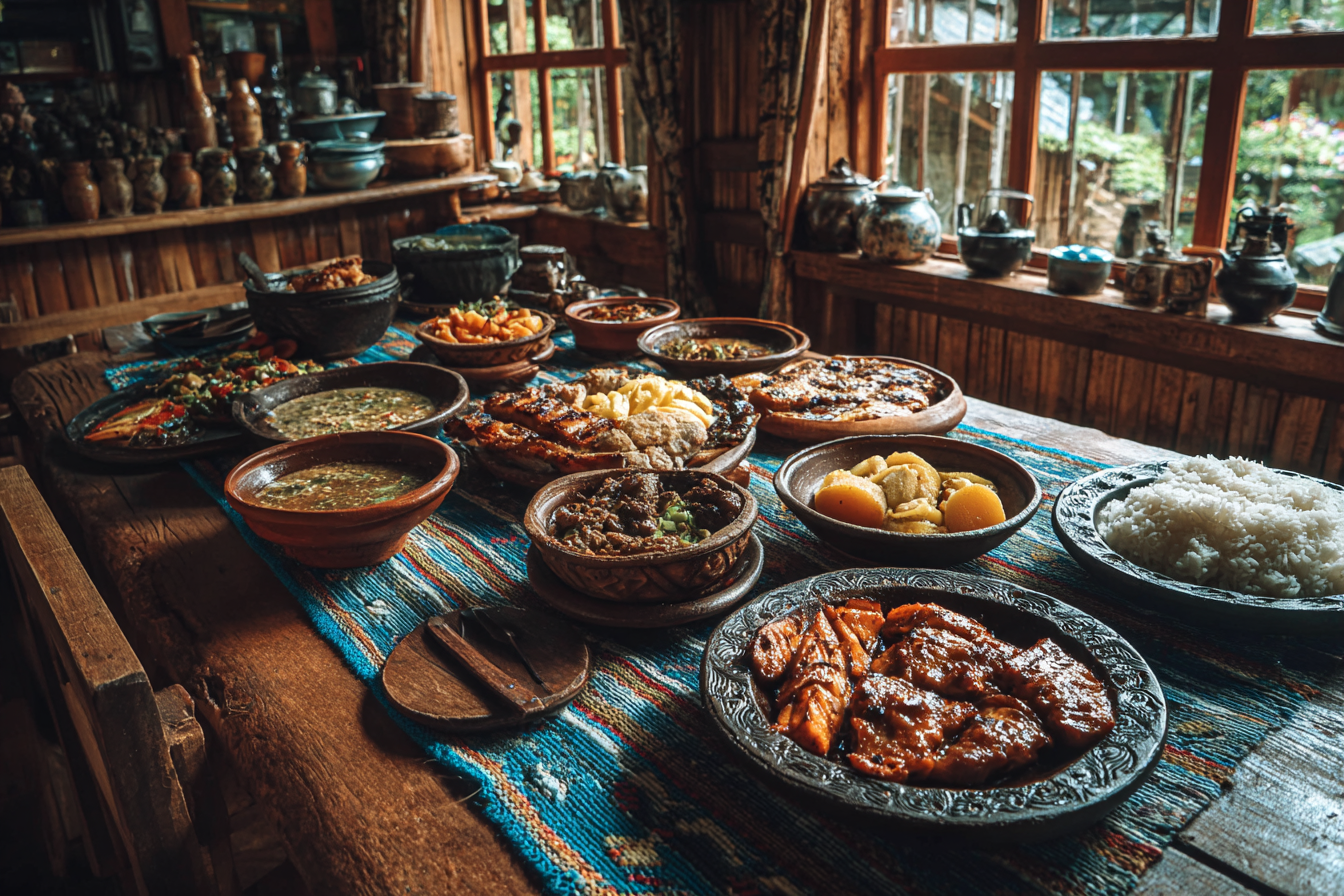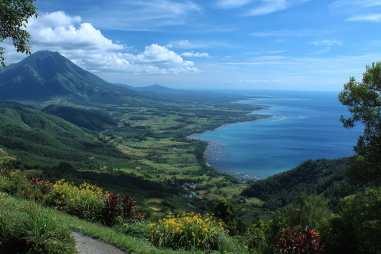Nestled in the mountainous terrain of the Cordillera region in the northern Philippines, Sagada is renowned not only for its breathtaking landscapes and rich cultural heritage but also for its distinctive food and cuisine. The flavors found here tell a story of indigenous traditions, locally sourced ingredients, and the cool mountain climate which shapes the way food is grown and prepared. For food lovers, Sagada offers an authentic culinary journey that blends simplicity with delightful tastes and textures.
Discovering Sagada’s Food Culture
The food culture in Sagada is deeply rooted in its indigenous roots and the communal way of life of the Ifugao and Kankanaey peoples who inhabit this region. Much of the cuisine reflects a sustainable approach to cooking, where locally grown produce, fresh river fish, and indigenous methods come together to create dishes that are both nourishing and flavorful. Because of its high altitude, Sagada’s agricultural landscape is home to vegetables and herbs not commonly found in other parts of the country, making its food truly unique.
Beyond the ingredients, the preparation and sharing of food in Sagada emphasize community and tradition. Many recipes have been handed down through generations, often cooked over wood-fired stoves or preserved through natural methods such as fermentation and smoking. This tradition adds to the distinctive taste that food adventurers seek when visiting Sagada.
Must-Try Local Dishes in Sagada
If you want to experience the essence of Sagada’s cuisine, here are some dishes you definitely shouldn’t miss:
- Pinikpikan: Often called the “smoked chicken” dish, Pinikpikan is a traditional Ifugao delicacy where the chicken is lightly beaten before cooking to enhance its flavor. It is cooked with vibrant herbs and smoked over a fire, resulting in a flavorful and aromatic broth enjoyed with rice.
- Etag: This is cured and smoked pork, preserved using salt and smoke over several days. Etag is often added to soups or served grilled with vegetables, imparting a rich smoky flavor characteristic of Sagada’s cuisine.
- Vegetable Soup with Indigenous Greens: Thanks to the cool climate, Sagada grows indigenous vegetables like gabi (taro leaves), kamote tops (sweet potato leaves), and other wild greens which are often featured in hearty vegetable soups.
- Rice Cakes and Indigenous Sweets: Kiping, made from rice dough molded into leaf shapes and fried or steamed, is a sweet snack that is popular during festivals and celebrations.
Where to Eat: Popular Restaurants and Eateries
Sagada’s culinary scene boasts charming cafes and homestyle eateries where visitors can enjoy authentic dishes and mountain views. Here are some favorites among locals and travelers alike:
- Yoghurt House: Known for its luscious homemade yoghurts infused with local fruits, this spot also serves sandwiches, pastries, and traditional meals.
- Dao’s Sagada: A cozy restaurant offering traditional Filipino meals with a specialty in local Sagada produce and Etag dishes.
- Log Cabin Restaurant and Bar: Perfect for sampling local dishes as well as comfort food in a rustic, wood-paneled setting.
- Masferre Café Bulodel: This café serves fresh coffee made from Sagada beans along with light meals and snacks featuring indigenous ingredients.
Indigenous Ingredients and Cooking Methods
Sagada’s food is distinguished by its use of unique, indigenous ingredients grown or foraged locally. The use of natural preservation methods like smoking (used for etag and pinikpikan), fermentation, and curing has been passed down through generations and continues to define the flavors of this region.
Locals often cook using firewood or charcoal, imparting a subtle smokiness that is difficult to replicate with modern cooking appliances. Traditional stewing, boiling, or wrapping food in leaves to steam it over coals are common preparations that emphasize natural flavors while blending earthy, smoky notes.
Unique Beverages: Savoring Sagada Coffee
One cannot talk about Sagada’s culinary culture without mentioning its prized coffee. Grown in the high-altitude farms surrounding Sagada, the coffee beans benefit from cool temperatures and rich mountain soil. Sagada coffee is known for its smooth, robust flavor with hints of earthiness and a slightly nutty finish.
Visitors can enjoy freshly brewed Sagada coffee at local cafés or even buy the beans as souvenirs to bring home the authentic taste. Many coffee farms offer tours where visitors can learn about the coffee growing and processing methods unique to Sagada’s environment.
Food Festivals and Markets: The Heartbeat of Sagada’s Culinary Scene
To truly immerse yourself in the food culture of Sagada, plan your visit around one of its lively food festivals or weekend markets. The annual Sagada Coffee Festival showcases the best local brews alongside cultural performances and food stalls offering indigenous dishes and snacks.
Regular markets in the town center give visitors the chance to browse fresh produce, homemade rice cakes, dried etag, and a variety of native products. Engaging with local vendors offers an authentic experience and insights into the ingredients that define Sagada’s cuisine.
Tips for Adventurous Eaters
If you are eager to dive deep into Sagada’s culinary offerings, here are some tips to enhance your experience:
- Be open to trying indigenous delicacies: Foods like pinikpikan or fermented products might be new to your palate but offer an authentic taste of Sagada’s heritage.
- Ask locals for recommendations: Many of the best dishes are found in small eateries or even homes where recipes have been cherished and perfected.
- Try seasonal fruits and vegetables: The mountainous region yields unique crops depending on the season, which can be a delightful surprise.
- Practice mindful eating: Many dishes are prepared using traditional, communal methods—appreciate the craft and the history behind each bite.
Dietary Considerations for Travelers
While Sagada’s cuisine proudly features meat, especially pork and chicken, the abundance of indigenous vegetables means that vegetarians and even vegans can find satisfying options. However, it’s important to communicate dietary restrictions clearly when ordering as some dishes may contain meat-derived broths or seasonings.
Those with food allergies or sensitivities should inquire about ingredients beforehand, as traditional cooking in Sagada may involve native herbs and fermentation that could trigger reactions. It’s also wise to bring some familiar snacks for longer treks in the mountains or times when food options might be limited.
Exploring Sagada through its food reveals much about the region’s people, environment, and traditions. The authentic flavors, hearty preparations, and unique ingredients provide a nourishing experience not just for your body but for your appreciation of indigenous culture as well. Whether you’re sipping a warm cup of Sagada coffee or savoring the smoky depth of etag, each bite and sip takes you closer to the heart of this mountainous paradise.







